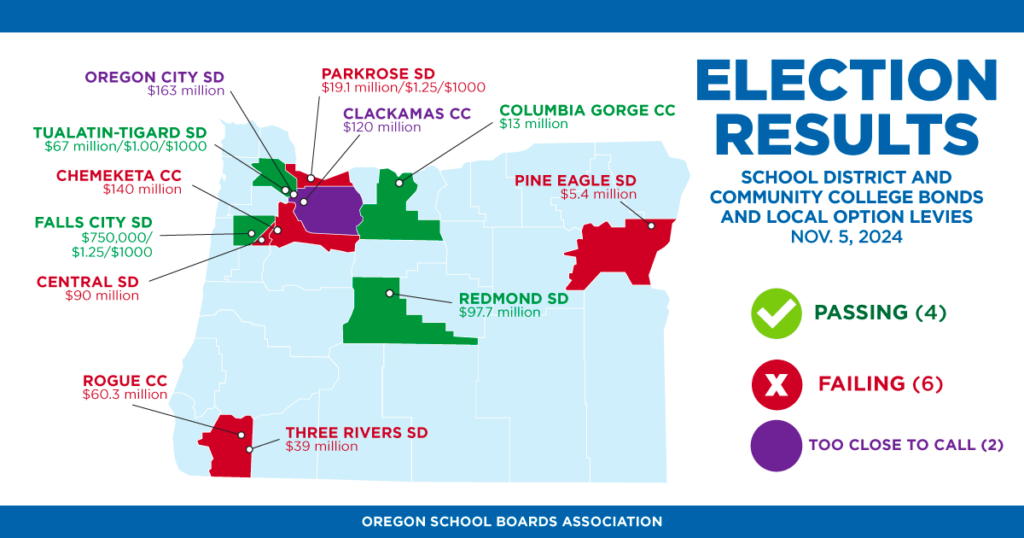
Oregonians around the state gave a resounding no to raising local taxes for school buildings.
Of nine bond elections for school districts and community colleges, only two had clearly passed in early returns with two more being too close to call. Districts with pressing facility needs will have to go back to the drawing board or hope for a legislative lifeline.
Oregon schools average more than 40 years old, according to the Oregon Department of Education, with some being more than a century old. Many are outdated, inadequate or require significant structural or facility upgrades. Older schools lack modern safety features, technology support systems and optimized learning environments for current instruction methods.
The stark differences in school facilities create jarring inequities within the state and even within districts. Districts can’t realistically pay for buildings or major facilities work out of their tightly stretched general budgets, so they have to ask their communities for money through bonds. When voters say no, the work doesn’t get done and the gaps in school facilities widen year by year.
The state offers limited help through Seismic Rehabilitation Grants, which still force districts to come up with building funds, and the Oregon School Capital Improvement Matching Program, which is only useful if a district can pass a bond.
Education advocates, including OSBA, will be talking with legislators during the 2025 session to find other ways to help schools address their facilities needs.
Most of the votes Tuesday were not even close according to incomplete results Wednesday evening from the secretary of state’s office.
The Pine Eagle School District was aiming to update outdated and failing mechanical systems. After a May bond effort failed soundly, it reduced its ask to less than half and gave up on getting a new gym. It looks like it still lost, with 54% opposed.
The Central School District had improvement plans for all its schools, but its main push was replacing Monmouth Elementary. Its old-fashioned design raises significant safety fears for parents and even students, according to the district. Voters seem to have dismissed the safety concerns, with 56% saying no.
The Three Rivers School District just wants to put new roofs on buildings that average 65 years old, according to the district. Voters told them no in May, but they came back again because school leaders consider the need to be dire. Voters appear to have resoundingly said no again, with 73% opposed.
The Oregon City School District wanted to update its six elementary schools, which average 62 years old and have never been updated, according to the district. The vote is too close to call, but the yes votes were slightly ahead as of Monday, Nov. 11.
The Redmond School District was at least able to make the pitch that a new bond for facilities improvements across the district is not expected to raise to raise the levy rate because another bond is expiring. Redmond seems to have had a winning pitch, with 52% approving.
Community colleges fared equally badly. Chemeketa appears to have lost, with 58% opposed. Rogue also seems to have failed, with 60% against. Clackamas is too close to call but had edged into the yes column as of Monday, Nov. 11. Only Columbia Gorge clearly prevailed, earning 53% approval.
In a limited sample, voters were more disposed to approve levies, which typically pay for staff and programs. The Tigard-Tualatin and Falls City school districts are passing their levies by wide margins, while Parkrose seems to have lost narrowly.
– Jake Arnold, OSBA
[email protected]